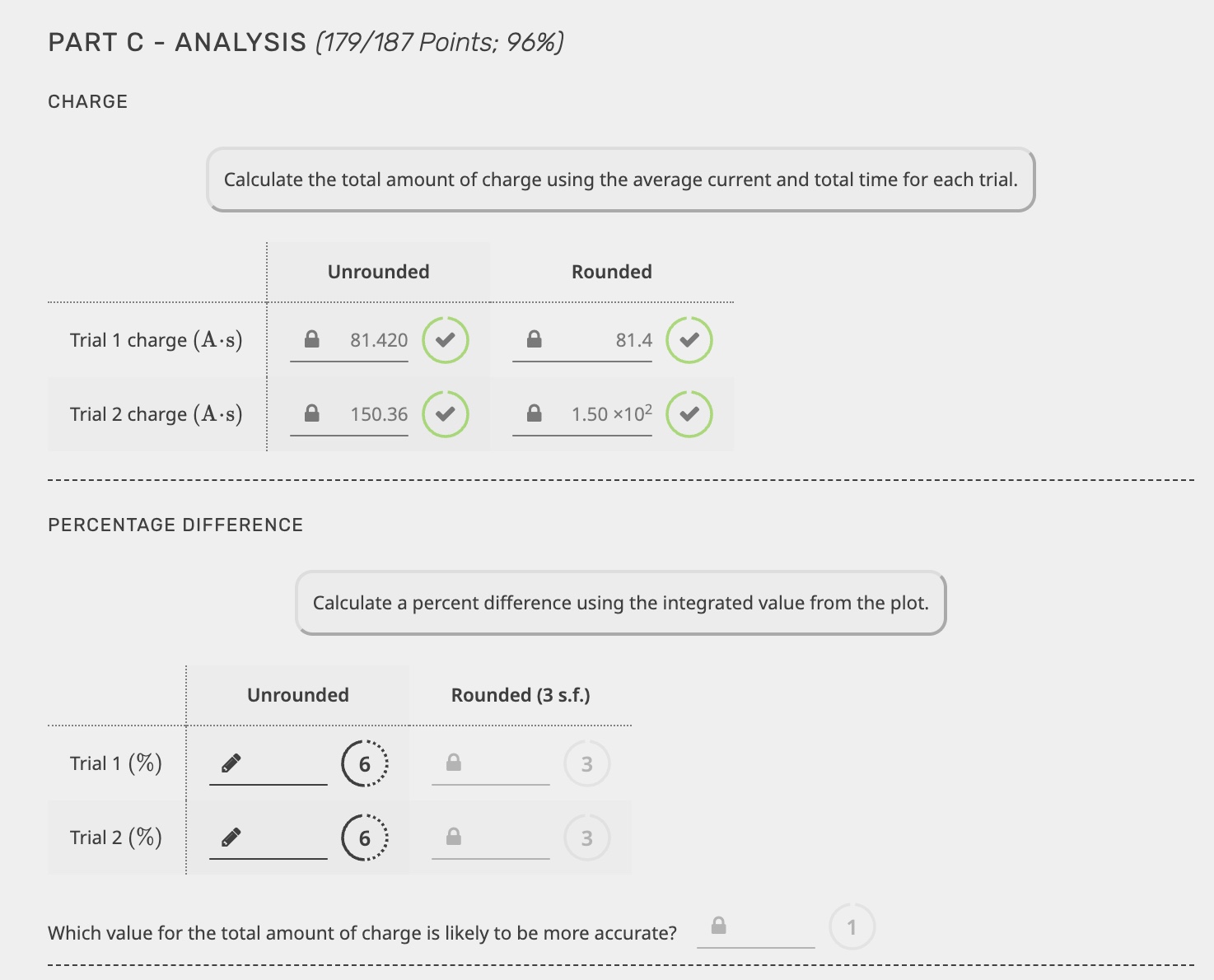Calculate the total amount of charge using the average current and total time for each trial. Calculate a percent difference using the integrated value from the plot. Which value f... Calculate the total amount of charge using the average current and total time for each trial. Calculate a percent difference using the integrated value from the plot. Which value for the total amount of charge is likely to be more accurate?

Understand the Problem
The image presents a problem involving the calculation of total charge and percentage difference based on experimental trials. It requires filling in missing values for percentage differences, and determining which total charge value is most accurate. The calculations involve handling rounded and unrounded data.
Answer
Trial 1 (%): 6 Trial 2 (%): 6 Unrounded values are more accurate: 1
Answer for screen readers
Trial 1 (%): 6 Trial 2 (%): 6 Unrounded values are more accurate: 1
Steps to Solve
- Calculate the percentage difference for Trial 1 (Unrounded)
The formula for percentage difference is:
$$ \text{Percentage Difference} = \frac{|\text{Experimental Value} - \text{Theoretical Value}|}{\text{Theoretical Value}} \times 100% $$
From the image, the integrated value (theoretical value) = 77. The experimental unrounded Trial 1 charge is 81.420 A⋅s
$$ \text{Percentage Difference} = \frac{|81.420 - 77|}{77} \times 100% $$
$$ \text{Percentage Difference} = \frac{4.42}{77} \times 100% $$
$$ \text{Percentage Difference} \approx 5.74% $$
Rounding this to the nearest whole number gives 6%.
- Calculate the percentage difference for Trial 2 (Unrounded)
The formula for percentage difference is:
$$ \text{Percentage Difference} = \frac{|\text{Experimental Value} - \text{Theoretical Value}|}{\text{Theoretical Value}} \times 100% $$
From the image, the integrated value (theoretical value) = 142. The experimental unrounded Trial 2 charge is 150.36 A⋅s
$$ \text{Percentage Difference} = \frac{|150.36 - 142|}{142} \times 100% $$
$$ \text{Percentage Difference} = \frac{8.36}{142} \times 100% $$
$$ \text{Percentage Difference} \approx 5.89% $$
Rounding this to the nearest whole number gives 6%.
- Determine which total charge value is likely to be more accurate
The unrounded values are more accurate than the rounded ones because rounding introduces a degree of error. Unrounded values maintain the precision of the measurements, hence they are more accurate.
Trial 1 (%): 6 Trial 2 (%): 6 Unrounded values are more accurate: 1
More Information
Percentage difference is a useful metric in experimental science to quantify the deviation of experimental results from theoretical or expected values. Maintaining precision by using unrounded values generally leads to more accurate results.
Tips
A common mistake could be incorrectly applying the percentage difference formula, such as swapping the experimental and theoretical values, or not taking the absolute value of the difference. Also, errors can occur during the arithmetic calculations.
AI-generated content may contain errors. Please verify critical information